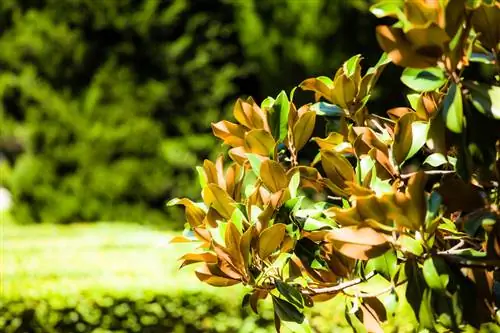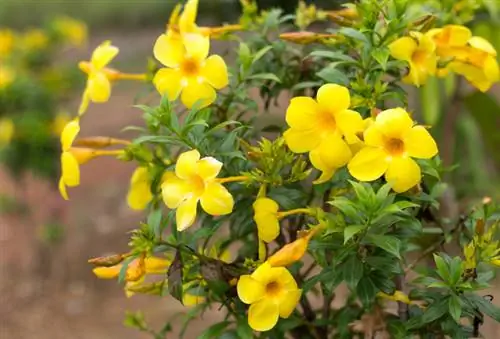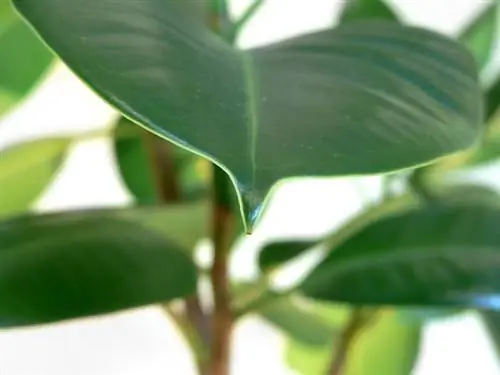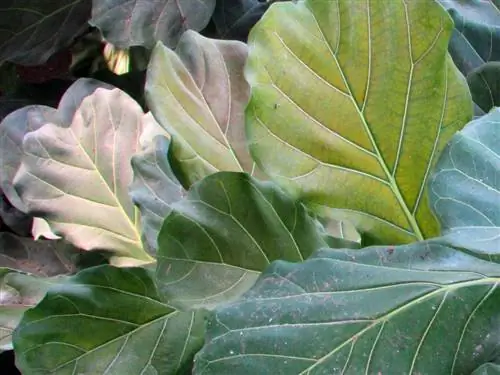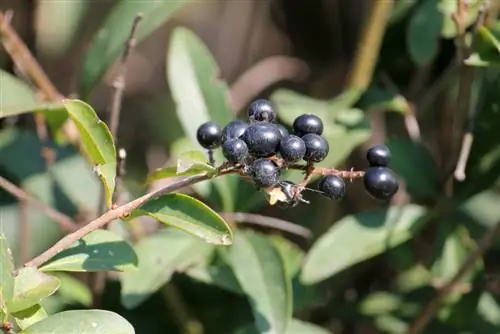- Author admin [email protected].
- Public 2023-12-16 16:46.
- Last modified 2025-06-01 06:02.
The olive tree is one of the oldest cultivated plants in the Mediterranean region - and has shaped the landscape of these regions like no other plant with its gnarled appearance. Given good conditions and proper care, the real olive tree, as the olive is also called, can live for several millennia. Indoor or potted olives often lose their leaves, especially in winter. We'll tell you why this is and what you can do about it.
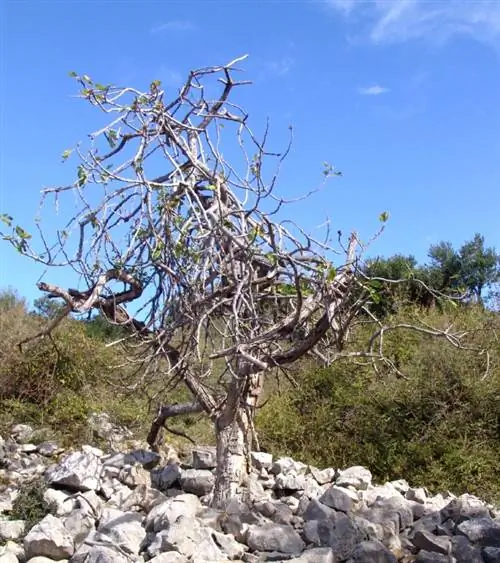
Why is my olive tree losing leaves?
If an olive tree loses leaves, the causes can be a lack of light, incorrect overwintering, too much or too little water. Make sure there is enough brightness, the right temperature and appropriate watering behavior to prevent leaves from dropping.
Leaf dropping has many causes
The olive is actually an evergreen tree, i.e. H. It does not change its leaves depending on the season as you know from the deciduous trees native here. If your olive drops more leaves or if they turn yellow, your little tree is not feeling well. However, it is not so easy to find out what exactly is missing from your tree. We'll help you!
Possible reasons for shedding leaves
If your olive drops leaves, there could be several reasons behind it.
- Lack of light, especially in winter
- wrong wintering (too warm, too cold, too much water, too little water)
- too much water / waterlogging (as a result the roots rot)
- Too little water (water from time to time even in winter!)
Make sure there is enough light
Olives are, in principle, quite easy-care plants that do not cause any harm to their owner/caregiver. However, they definitely need sun - especially in winter! Therefore, dark places such as basements are not suitable for overwintering and should only be used as an emergency solution for a short period of time. It is better to place the pot in a bright but cool place, such as a greenhouse or stairwell. However, since many types of olives do not tolerate drafts, you should also ensure a draft-free zone. Your olive should feel well protected in a bright corner.
Water olives correctly
It is quite dry in the homeland of the olive trees, only in the winter it rains a little more. In addition, olives that have just been planted can develop very deep and branched roots with which they can get even the smallest amount of moisture from the soil. For this reason, you should not water olives too often, as the root system reacts very sensitively to too much moisture and then begins to rot. So if your olive drops its leaves, the best thing to do is check the substrate and the roots for waterlogging or signs of rot. In this case, pot the plant in fresh substrate and carefully (!) remove the rotten roots. Especially in winter, it should be enough to water heavily once every two weeks. The soil should be dry before each watering.
Tips & Tricks
Olives prefer to overwinter at temperatures between eight and ten degrees Celsius. For this reason, they often lose their leaves after they have been left outside over the summer and are finally brought into the heated living room in the winter. In milder winter temperatures, you can also leave your olive outside - well wrapped and protected from the frost - in a protected corner (e.g. on the wall of the house).


